In March and April of this year, the once-quiet gold market came alive, breaking through its three-year resistance zone of $2,000 to $2,100 and soaring by $400 in just a few weeks. The move took nearly everyone by surprise, especially Western investors and traders who had lost interest in gold, lured instead by the allure of booming tech stocks and cryptocurrencies.
As gold’s sudden rally continued, more investors and journalists began to question who—or what—was truly behind the surge. After some investigation, it was revealed that the gold frenzy was primarily fueled by futures traders on China’s Shanghai Futures Exchange (SHFE) and the Shanghai Gold Exchange (SGE). A Financial Times article titled “Chinese Speculators Super-Charge Gold Rally” highlighted how trading volume in SHFE gold futures had surged by 400%, propelling gold prices to record highs:

Further evidence of the Chinese gold trading frenzy can be seen in the chart of open interest in SHFE gold futures:
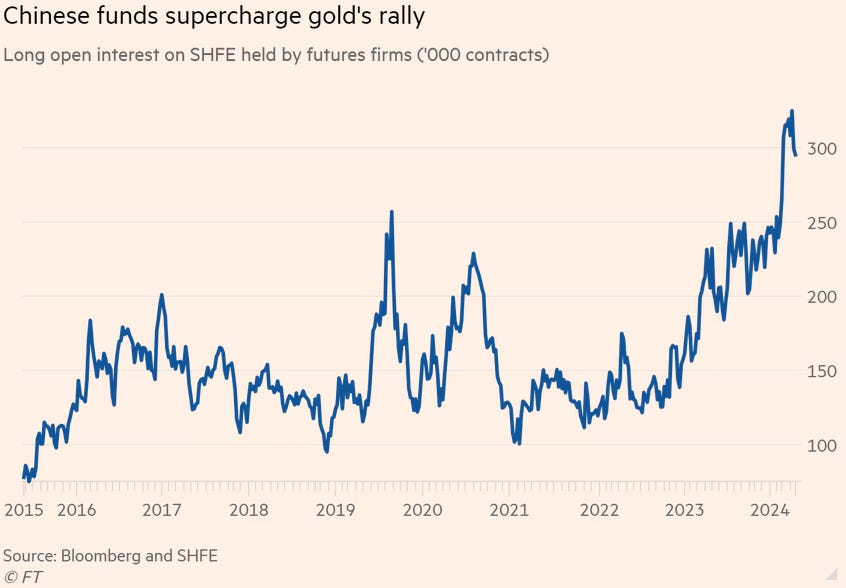
This episode made it clear that the East was asserting greater influence in the gold market, while the West was increasingly taking a back seat.
As the World Gold Council’s chief market strategist, John Reade remarked in the Financial Times:
“Chinese speculators have really grabbed gold by the throat.”
“Emerging markets have been the biggest end consumers for decades but they haven’t been able to exert pricing power because of fast money in the west. Now, we are getting to the stage where speculative money in emerging markets can exert pricing power.”
While Chinese traders and investors were actively driving up the gold market, Americans had been in the midst of a selling spree for over three years, offloading various gold-related assets, as illustrated by the black line on the chart showing the total gold holdings of U.S. exchange-traded funds or ETFs:
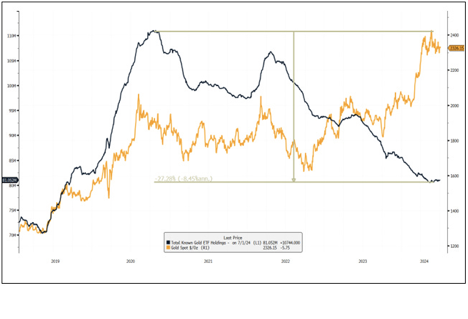
Source: Bloomberg
There are two main reasons why Americans have sold gold-related assets over the past several years:
- High real interest rates
- Low levels of financial fear/high levels of financial complacency
As the chart below illustrates, the 10-year U.S. real interest rate (i.e. the inflation-adjusted interest rate) has been hovering near a two-decade high. Unlike stocks, bonds, or real estate, gold and silver don’t generate any yield. When inflation-adjusted interest rates are elevated, investors typically prefer higher-yielding assets like savings accounts, money market funds, certificates of deposit, bonds, and dividend-paying stocks.
When inflation-adjusted interest rates are high, the opportunity cost of holding non-yielding assets like precious metals increases, prompting investors to hold off on purchases or even sell. Conversely, when real interest rates are low or negative, as they were in the early 2010s and again in 2020–2021, the opportunity cost disappears, driving investors to flock to gold and silver.
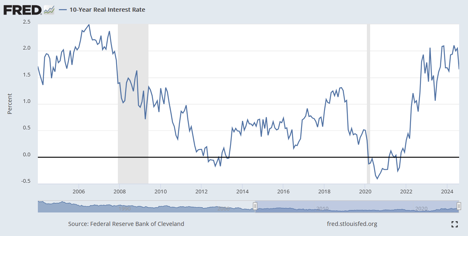
In the United States, gold is often viewed as a “fear asset,” frequently linked with survivalists stockpiling guns, ammo, and canned goods in bunkers. As a result, demand for gold tends to surge during recessions, financial crises, and inflation scares, while it wanes during periods of low financial stress and a booming stock market.
As shown in the chart of the S&P 500 Volatility Index—a widely watched gauge of financial fear—U.S. stock market investors displayed minimal fear throughout 2023 and early 2024, which helps explain their lack of interest in safe-haven assets like gold. U.S. investors similarly ignored gold during past asset bubbles, such as the late-1990s dot-com bubble, the mid-2000s housing bubble, and the late-2010s “Everything Bubble”—all of which turned out to be prime opportunities to buy gold at low prices before significant rallies.
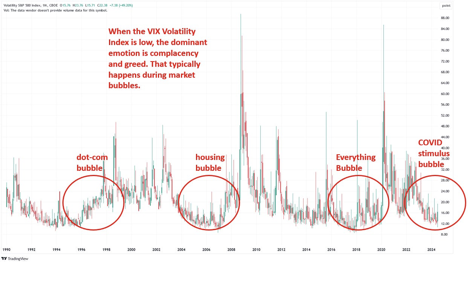
While the U.S. economy and stock market were buoyed by trillions of dollars in COVID stimulus, China’s economy has been mired in one of its worst downturns in decades. China’s once high-flying stock and property markets peaked in 2021 and have been in a relentless bear market that is reminiscent of Japan’s asset bubble and ensuing crash in the early 1990s. China’s property market crash has been so violent that the country’s real estate tycoons have already lost $100 billion in just a few short years. Sadly, China’s economic crisis shows practically no signs of letting up.
The SSE Composite Index—China’s benchmark stock index—has fallen hard over the past several years and is sinking once again after a brief bounce in the first-half of 2024:
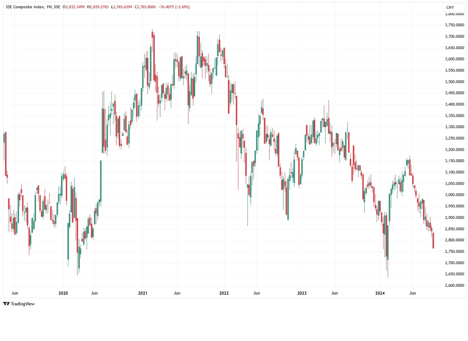
In response to the country’s economic downturn, the People’s Bank of China slashed interest rates to all-time lows:
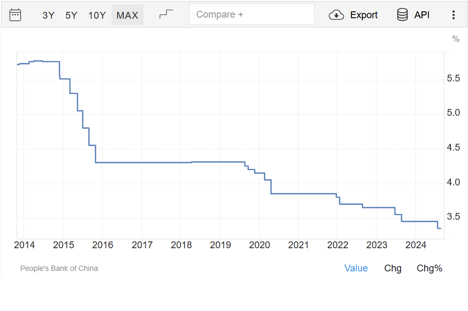
Source: Trading Economics
China’s low interest rates sharply contrast with U.S. rates, which are at their highest since the 2008 Global Financial Crisis. As mentioned earlier, gold, being a non-yielding asset, tends to perform better in low-interest rate environments. This explains why Chinese traders and investors have been driving up gold prices while their American counterparts have been selling it.
Moreover, Chinese investors, once captivated by the country’s booming stock and property markets, have grown disillusioned with those now-sinking assets and began shifting their focus to gold in early 2024. In addition to Chinese traders driving up gold futures, numerous reports emerged of Chinese retail investors flocking to shops to buy gold bullion, including small “gold beans” that were selling for 600 yuan, or about $83 each.
China’s gold trading frenzy lasted from mid-February to mid-April, until one day, it abruptly stopped—it was as if a switch had been flipped. Several factors contributed to this sudden shift in behavior, including margin hikes and tighter position sizes and daily price limits imposed by the Shanghai Futures Exchange and Shanghai Gold Exchange. Additionally, the high price of gold cooled demand from Chinese and Indian retail investors and shoppers.
Since mid-April, gold (priced in U.S. dollars) has been in a slow, meandering uptrend, with several attempts to reach all-time highs, only to pull back each time:
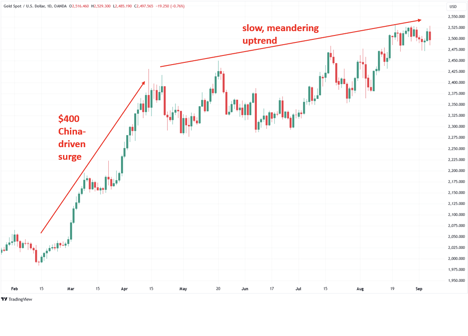
While precious metals investors like myself certainly appreciate gold’s price gains, many commentators have expressed disappointment over the rally’s lack of strength and staying power over the past five months.
On social media, I’ve come across numerous comments similar to the ones below:
- “Gold and silver are due for a crash any day now!”
- “Gold and silver MUST correct first before rising any further”
- “Why do gold and silver go two steps forward and one step back?”
- “Why is silver acting soggy?”
- “Why are gold mining stocks lagging?”
A key but little-known factor behind gold’s tepid summer uptrend is that it has been driven almost entirely by weakness in the U.S. dollar rather than by gold’s own strength. Gold and the U.S. dollar typically move inversely, meaning dollar strength weakens gold and vice versa. (When I discuss dollar weakness or strength in this instance, I’m referring to its exchange rate against other fiat currencies. Of course, the dollar is losing purchasing power as a function of time.)
Since late April, the U.S. Dollar Index has been in a significant downtrend:
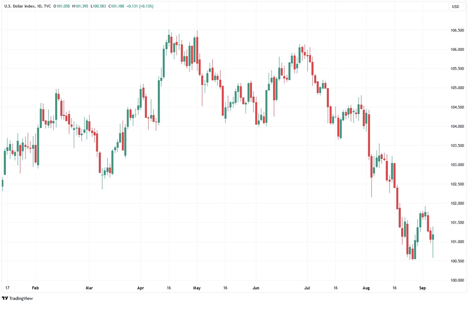
Interestingly, despite gold’s recent gains in U.S. dollar terms, its price has remained virtually stagnant over the past five months when measured in Chinese yuan and other major currencies (read my recent article about that). That is the reason why gold’s summer rally has lacked vigor—it hasn’t been firing on all cylinders! I cannot emphasize that fact enough. Please keep that in mind next time you feel tempted to grumble about Gold’s performance.
The chart below displays Shanghai Futures Exchange gold futures, which were the primary vehicle behind the gold frenzy in March and April. Notice how, since the April peak, prices have been oscillating within a well-defined trading range.

Here’s my theory and the whole point of this piece: if SHFE gold futures can break above the 585 resistance level (or 18,000 in the XAUCNY spot) with substantial volume, it’s likely that Chinese gold futures traders will come out of hibernation, driving gold significantly higher in a move reminiscent of the surge we saw in March and April.
Once SHFE gold futures surpass 585, trend-following buy programs will kick in, human traders will get FOMO, and the rest of the world will pile on as well. In addition, China’s ongoing economic malaise—and soon the United States’—should support robust demand for physical gold in the years to come.
Although physical gold buyers in China and India have slowed their purchases due to high prices, they will eventually have to accept that gold prices aren’t likely to drop anytime soon. This realization could trigger a rush to buy gold before prices climb even higher.
If SHFE gold breaks out of its trading range with gusto, it is likely to follow what technical analysts call a “measured move,” which is when a rally after a consolidation pattern is projected to rise the same number of points as the rally that preceded the consolidation pattern. According to that principle, gold is likely to reach approximately $3,000 in just a couple of months after breaking out! In case that sounds preposterous, that is only a 20% move from here—something that has already occurred this year.
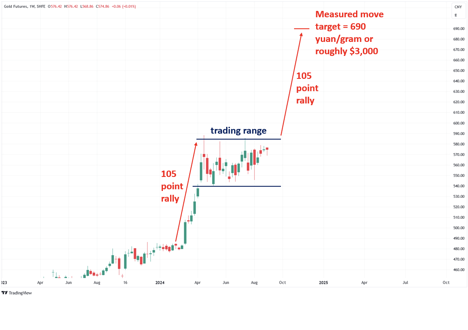
Please keep in mind that this thesis needs to be confirmed by a high-volume breakout; without that, all bets are off. In addition, it is important to be aware that gold may experience a brief pullback before it finally breaks out.
In summary, Chinese gold futures traders were the driving force behind gold’s remarkable $400 rally this past spring. However, since April, those traders have been largely dormant, causing gold to stagnate throughout the summer—especially when priced in non-U.S. currencies. This isn’t a cause for pessimism but rather one for optimism. There’s a strong chance that once gold breaks out of its current trading range, those same Chinese traders could spark another powerful rally, with the rest of the world quickly piling on to propel gold to $3,000.
Read the full article here

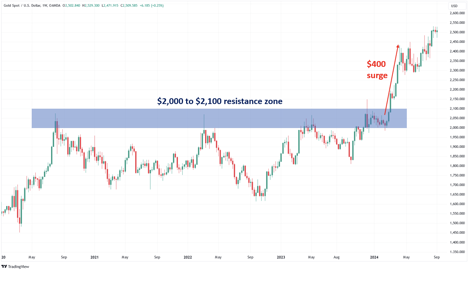







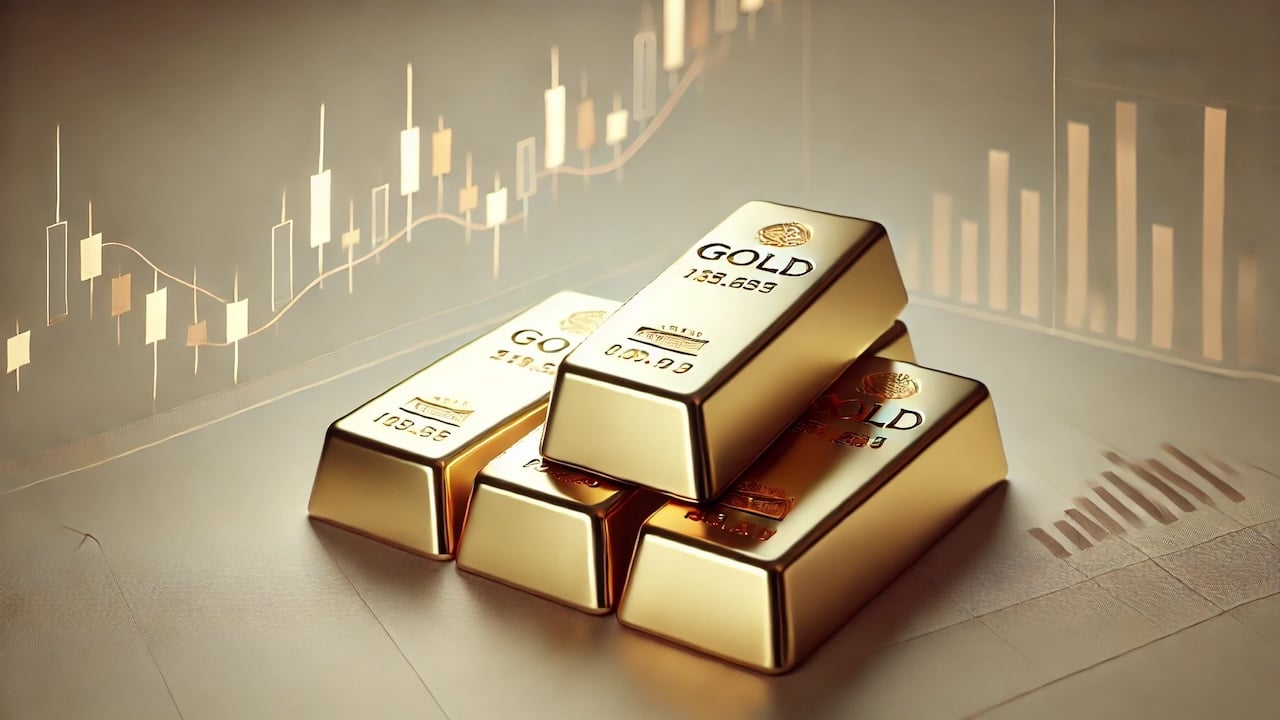


Leave a Reply